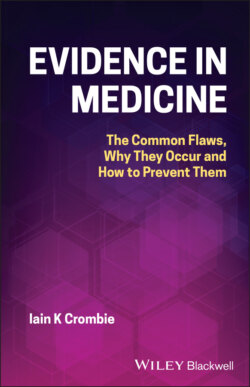Читать книгу Evidence in Medicine - Iain K. Crombie - Страница 14
THE NEED FOR BLINDING
ОглавлениеA major concern of several trials in the middle of the twentieth century was to ensure that the patients and clinical observers were unaware of how treatments were allocated [39, 41, 43]. This would prevent knowledge of who received which treatment from influencing the outcome of the study. The idea was not new; it featured in studies to evaluate a treatment called animal magnetism. This treatment was championed in the late 1700s by Franz Anton Mesmer, who believed he could impart magnetic energy and thereby cure a wide range of illnesses [47]. Mesmer achieved great fame, and a lucrative medical practice in Paris. This popularity was of such concern to other doctors, and to the government, that they persuaded Louis XVI to establish a Royal Commission to evaluate the claims of cures and dramatic effects [47, 48]. The Commission conducted a series of studies in which participants either thought they were being magnetised (when they were not), or thought they were not subjected to magnetism (when they were). The findings were convincing. Participants only reported benefits when they (falsely) believed they were being treated: ‘the imagination is the real cause of the effects attributed to magnetism’ [47]. Following publication of the Commission's report, Mesmer was ridiculed, and animal magnetism was abandoned in France.
A more recent example of the importance of blinding is the evaluation of a surgical technique, internal‐mammary artery‐ligation, for the relief of angina symptoms. Several reports in the 1950s had claimed that the operation provided considerable relief of symptoms [49, 50]. This prompted two groups of researchers to carry out controlled trials to evaluate the effectiveness of the surgery. Patients were randomly allocated to have artery ligation, or to a control group which received a sham operation involving only a skin incision. The patients, and the cardiologists who evaluated the outcomes, were blind to treatment group. The ligation operation provided no benefit, as most patients in both the treatment group and in the control group reported significant improvement in symptoms [49, 50]. The authors concluded that these claims were most likely a psychological response to undergoing surgery.
The response to a sham treatment is known as a placebo effect. Understanding of the psychological and physiological factors underlying the placebo response has advanced greatly in recent years [51, 52]. A consistent finding is that patients who have high expectations of their treatment usually experience improvements in symptoms. If patients were aware of their treatment allocation, only those in the active group would have the high expectations. Concealment of treatment allocation could prevent this bias from creating difference between the groups.
